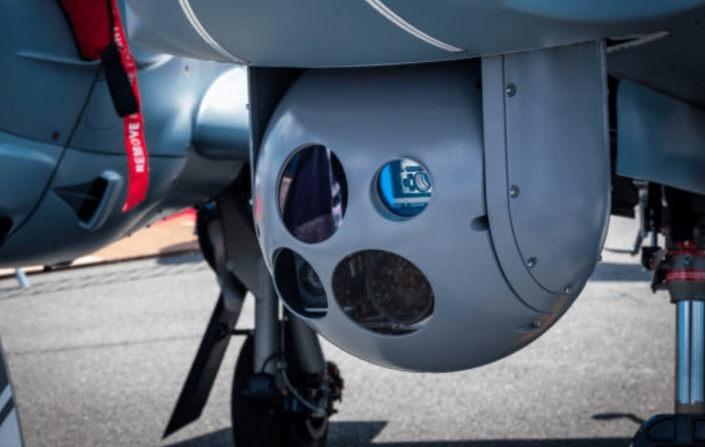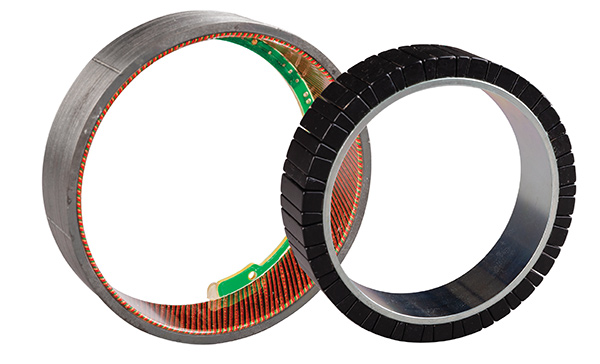Gimbal Motor
Gimbals can be found on unmanned vehicles, telescopes, satellites, ground communications systems, infrared communications systems, lidar systems, security monitoring systems, and many more mobile and static platforms. Anytime you wish to provide rotation and elevation, (pan and tilt), some form of a gimbal is required.
Gimbal Example
A gimbal is really a two axis motion system where azimuth rotates 360 degrees and elevation, depending on the application, can move from 10 to 80 degrees. The motion can be open loop passive scanning or precision pointing with high resolution feedback, and sometimes image feedback and tracking is present.
A simple gimbal camera gimbal can be powered by two DC gear motors and is typical for pan and tilt security system cameras that passively operate. With manual control these camera gimbals can be moved to certain positions and taught to scan automatically.
Precision gimbals use accurate mechanisms and highly integrated motors to move in fine increments when following or tracking a signal. The most intelligent gimbals on mobile platforms have transitioned to direct drive torque motors.
Direct drive allows the gimbal system to have high bandwidth, high resolution and high accuracy. When combined with a proper high resolution encoder, the direct drive motor can move with micron accuracy and smooth precision. The higher resolution and smooth motion can allow a communications gimbal to track objects up to and beyond 10 Kilometers away.
Frameless Direct Drive Torque Motor
The modern day gimbal motor is a frameless direct drive torque motor, preferably slotless in construction. The frameless motor is integrated into a mechanical assembly with azimuth and elevation motion. The frame of the gimbal becomes the locating and bearing system for the motor. This is the ultimate direct drive approach minimizing any alignment errors and eliminating couplings.
The Gimbal Motor has a large through hole for mechanical parts and wiring to fit within the motor. It is also low profile to optimize the angle and travel of the gimbal system. A frameless kit encoder is typically integrated into the gimbal mechanics in order to optimize space, weight and wiring.
Smoothness of motion is required in all gimbal systems that are precision tracking at long distances. The best solution to this is a slotless air core motor. Slotless motors have zero cogging torque and can achieve very low torque ripple when moving. Torque ripple can cause position errors or make the control system continuously compensate for errors.
Low voltage optimization is usually required for gimbal systems. Most systems operate at less than 48 volts and nearly all of them operate with DC voltage rather than AC. Drones and satellites typically require low voltage of < 40 volts due to batteries and charging systems (solar or generator based).
In many cases the elevation axis of a gimbal does not need a complete 360 degree motor. An arc shaped motor can be used due to the limited angle of travel. Arc-shaped frameless motor kits are available that are air-core construction and have all of the similar features to slotless rotary direct drive torque motors.
| Gimbal Motor | What is important |
| Frameless Direct Drive Torque Motor | Highly integrated for highest performance and lowest weight. No couplings, no extra bearings, no extra housing |
| Slotless, Air-Core Construction | Zero Cogging, smooth motion, low torque ripple, low weight |
| Low profile | Allows large angles of gimbal motion, minimum weight |
| Large through hole aperture | Allows for wires, encoders and other parts to feed through the center of the motor |
| Optimized for low voltage operation | Compatible with aircraft, space, battery operation, and solar charging systems |
| Encapsulated winding construction | Encapsulation with a thermoset material, minimized exposure of chemicals, improves thermal time constant, handle shock and vibration |
If your project involves a precision gimbal system for communications or imaging systems, the first approach is using the solution above. If you don’t care about weight, accuracy, precision, or smoothness, then there are lots of off the shelf gimbals or pan/tilt system that are available.



